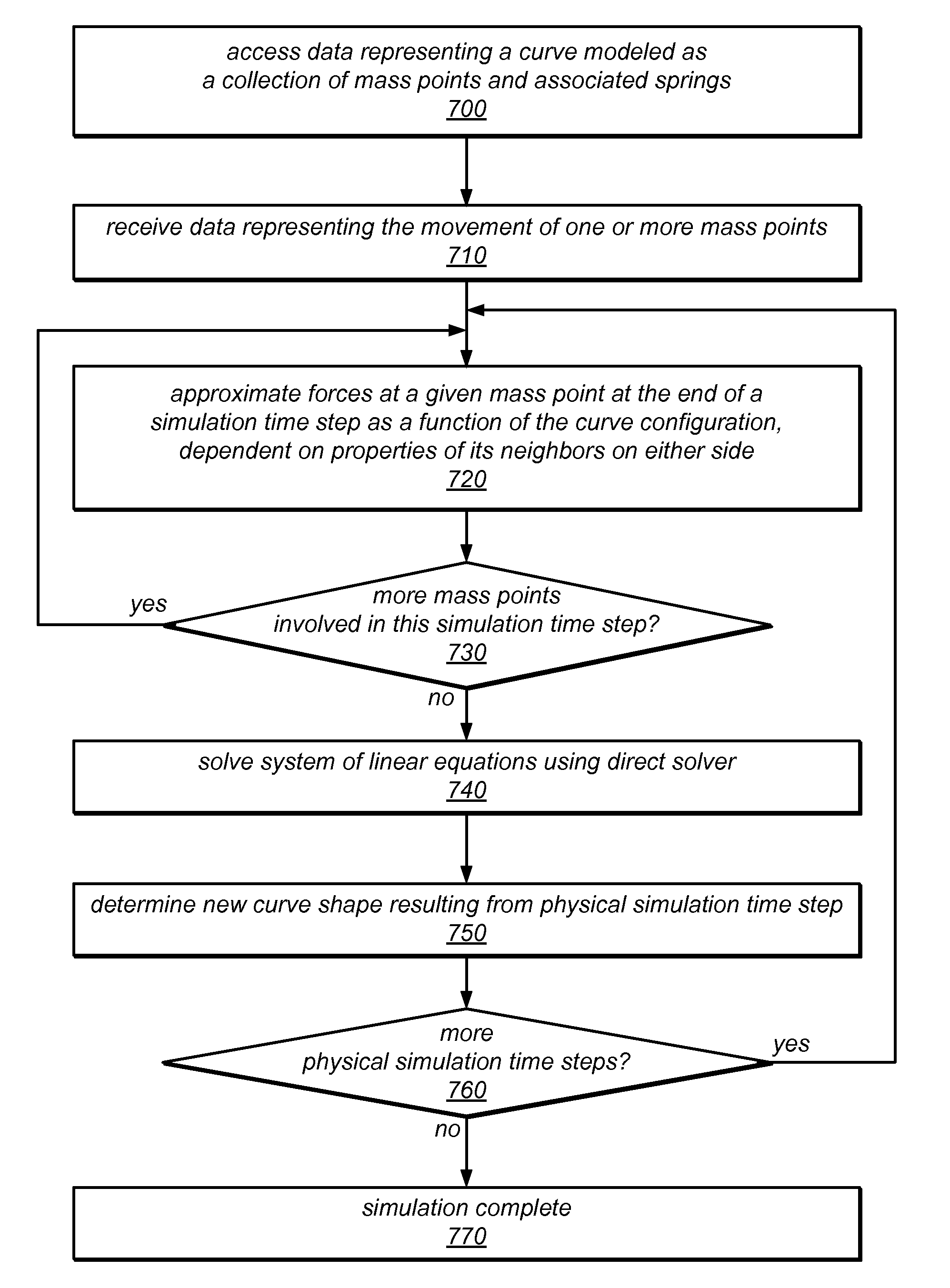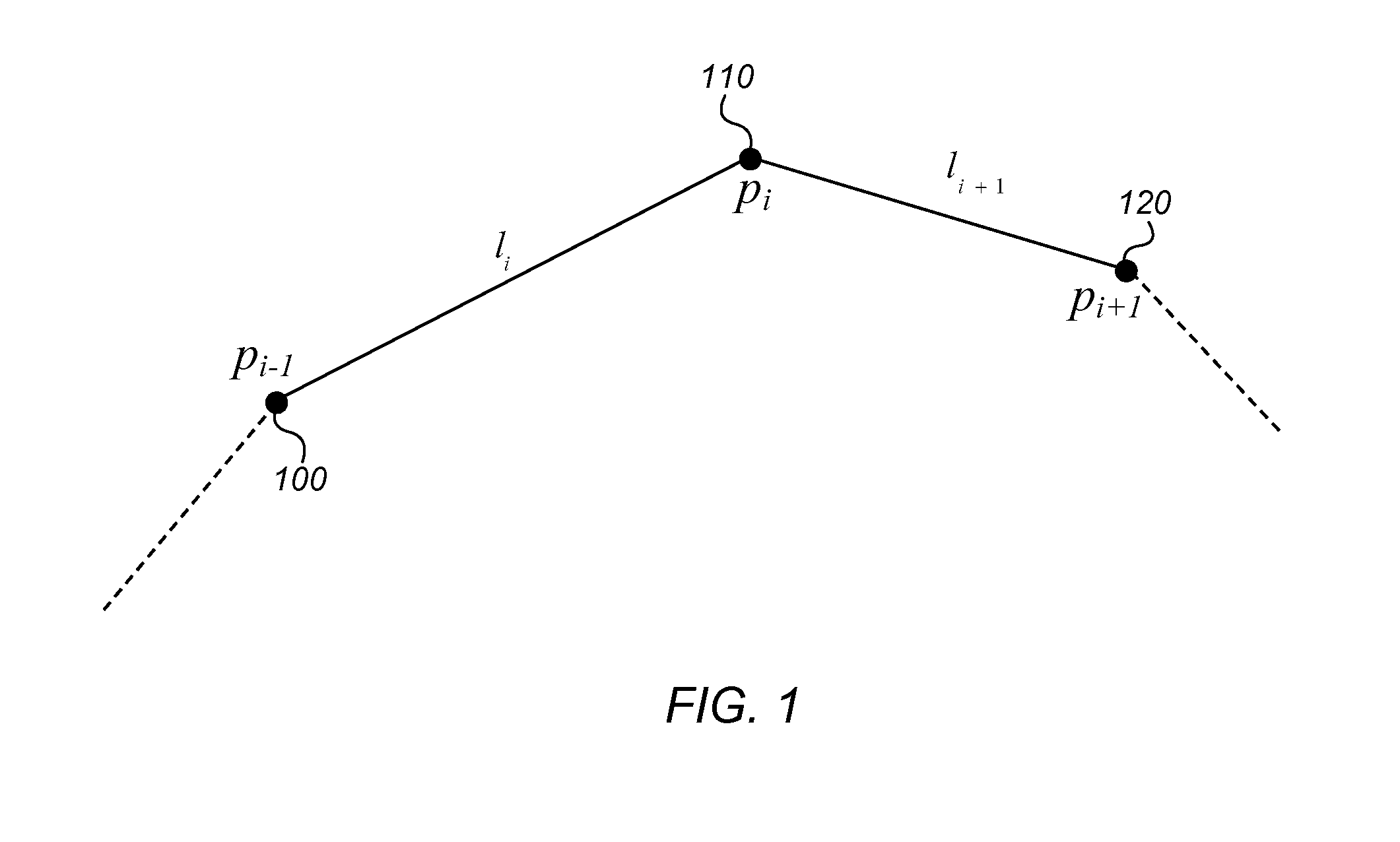System and Method for Physically Based Curve Editing
a technology of physical based curves and editing methods, applied in the field of system and method for physically based curve editing, can solve the problems of difficult prediction of editing operations involving the manipulation of the inability to intuitively operate by most users, and the inability to manipulate the control points of the curve. achieve the effect of finer granularity
- Summary
- Abstract
- Description
- Claims
- Application Information
AI Technical Summary
Benefits of technology
Problems solved by technology
Method used
Image
Examples
example implementations
[0107]FIG. 16 illustrates a curve editing module that may implement one or more of the physically based curve editing techniques described herein. Curve editing module 1620 may, for example, implement one or more of a curve model generator, a physical simulator for simulating curve editing operations, a linear system solver, a melting tool, or other components to implement the techniques described herein. In various embodiments, curve editing module 1620 may be a standalone module, or may be a module of an image editing application (e.g., any application that can be used to draw or edit images, including digital drawing / painting programs, photo editing programs, games, etc.) FIG. 16, described in detail below, illustrates an example computer system on which embodiments of curve editing module 1620 may be implemented.
[0108]As illustrated in FIG. 16, curve editing module 1620 may receive as input one or more digital images 1610, some of which may include one or more continuous curves....
PUM
 Login to View More
Login to View More Abstract
Description
Claims
Application Information
 Login to View More
Login to View More - R&D
- Intellectual Property
- Life Sciences
- Materials
- Tech Scout
- Unparalleled Data Quality
- Higher Quality Content
- 60% Fewer Hallucinations
Browse by: Latest US Patents, China's latest patents, Technical Efficacy Thesaurus, Application Domain, Technology Topic, Popular Technical Reports.
© 2025 PatSnap. All rights reserved.Legal|Privacy policy|Modern Slavery Act Transparency Statement|Sitemap|About US| Contact US: help@patsnap.com



